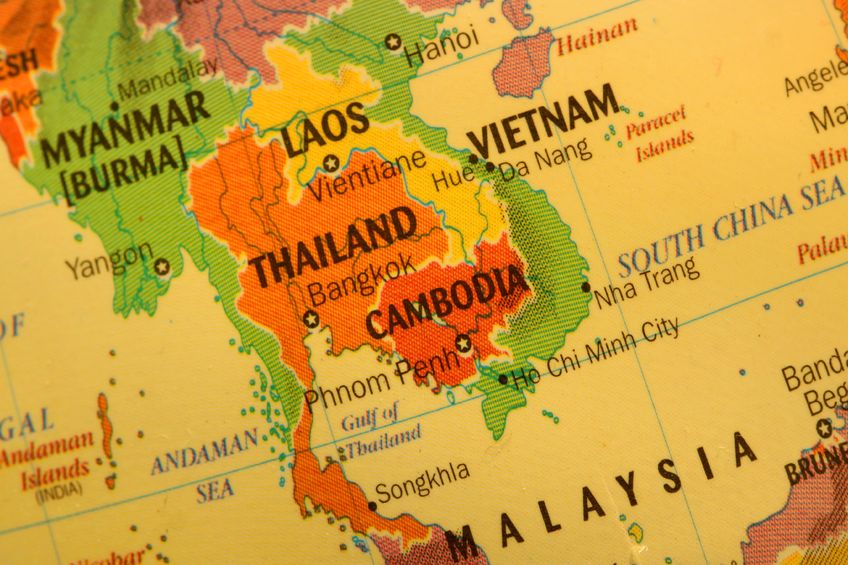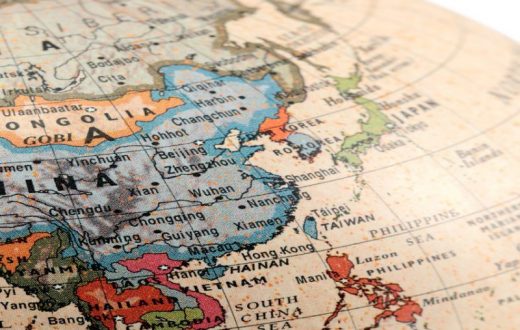Around the globe, developing countries are struggling to nurture industrialization which is one of the most important engines of growth. In addition to it, the fallout is dreadful with mammoth challenges like political turbulences, corruption, low foreign direct investment, poor infrastructure, lack of good governance, unemployment, illiteracy and so on.
With the changing time, developing countries have the realization of economics ties for world trading system. As a result profound impact on boosting trade, investment and economic corporation can be observed at this juncture.
According to World Bank, South Asia (SA) region remain to be one of the fastest growing region in the world with 6.8 percent in 2017. When we delve into history we can find that robust of economic growth resulted due to massive decrease in poverty with admirable improvement in human development. It is an irony of our times that people living on less than $1.25 a day dropped has gradually decreased. With these blossoming facts I developed the felling of joy and distress. Gone are those days when per capita national income of SA countries was lower than that of sub-Sahara countries.
In the midst of this growing SA much work need to be done to attain great take off. According to United Nation Conference on Trade and Development (2007), South Asia is home to 40% of the worlds’ poor and its share of total world exports was only 1.9 percent. In the same way, Foreign Direct Investment is not even an eighth of East Asia $214.2 billion.
With untapped opportunity and redundant labor in its stock, I wonder ‘What is holding back state leaders of South Asia Association for Regional Corporation (SAARC) to drive regional growth and mutual understanding? Firstly, legacy of mistrust and geo-political tiff has been a major unsolved issue not letting member countries to inculcate new vigor. As a result, we have dismal portrait of intra-regional trade which is limited to five percent only. A half full or half empty can be individual choice but at the moment I see half empty. Because as mentioned in the Deceleration of 18th SAARC Summit, South Asia Economic Union and SAARC Motor Vehicle Agreement is a far cry at the moment. The India Pakistan tension turn ugly with every ceasefire break.
In this recent aftermath of two Indian soldier’s incident, it will turn out to be messier if both countries public’s perception is not improved with soft diplomacy. As the fears of individuals opt for Newton third law of motion is worrisome. There is no one-size-fits-all solution, still hopes are high with talks sitting across the table and moderation from at least one or both countries is most essential. As a postponed date nears, will India PM Narendra Modi and Pakistan PM Nawaz Sharif reap potentialities of cross- border cooperation?
As the other side of the fence is always greener, Association of Southeast Asian Nations has similar high degree of political and social diversity but it has not been a parameter when it comes to business ties. In the same way, European Union also drove towards to regional integration keeping the long standing political difference aside.
Secondly, India being one of the biggest and growing nation in the SA it has not been able to remove the trust deficits among the member states. A large hearted leadership with sufficient motivation and accommodating approach is utter need. In the same way, other SAARC member state should ponder about famous saying by Yogi Berra, “If you don’t know where we going you will end up somewhere else.” Poor man’s club is an underrated term to define SAARC which has the potential beyond limitations.
In 21st century, digital communication is changing the definition of trade. Now trade is not confined with physical trade rather it’s electronic and connecting different small producer. Countries over west have defining shift to modern economy from agricultural to high quality industrial products with updated technology breakthroughs. Structural transformation from surplus manpower engaged in agriculture to agro- industry can nurture poor countries trade. Moreover, manufacturing sector, textile and clothing industries will also be source to observe surplus human capital. Millions of women are also economically empowered which help to reduce gender wage gape as well.
On the flip side, globe often surround with voices of trade reinforcing income inequalities. Different reports, articles argue the fact that every $1 generated through export activity, $0.75 goes to the world’s richest countries. Low-income countries receive around $0.03.
In last decades, Nepal service sector has been a major contributor for Gross Domestic Products rather than industry-cum-manufacturing based growth that encourage, enlarge quality of employment and offers better job opportunities. As a result, growing trade deficits continue due to ramp up imports. Theoretically, industrialization is an essential pre-requisite for rapid and sustained economic development and social progress. Nepal manufacturing business environment experienced setbacks due to politicalized trade unions.
At present, although bogged down amidst the dark clouds of politics and earthquake, it was mind-boggling facts that Nepal growth rate robust. In the month of March, Nepal Investment Summit garnered nearly about Rs. 1,446 billion commitment of investment. But Nepal is still lacking the political will to unite and create a prosperous Nepal. New Nepal or other high sounding name with lip service is not the need of public people. It’s the time for the leaders to read between the lines and realize the actual meaning of the saying ‘Action speaks louder than words’ their new mantra.
And society is in no mood to see the same old political soap opera.







